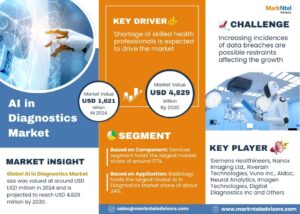
Your Path to Becoming a Web Developer Starts Now
The internet is massive — with billions of websites and applications running across the globe. Whether it’s a sleek portfolio, an online store, or a complex software platform, web development is at the heart of it all. If you’ve ever thought about building your own website or starting a career in tech, 2025 is the perfect time to dive in.
With digital transformation continuing across industries, the demand for skilled web developers is soaring. In fact, many businesses are actively looking for a reliable web development company in India to bring their digital vision to life. This guide will walk you through everything you need to know to start learning web development from scratch — even if you have zero experience.
Section 1: Understanding the Core Concepts
What is Web Development?
Web development involves creating websites and web applications that are accessible through browsers. It’s more than just code — it’s about crafting seamless and engaging experiences for users. Developers take ideas and turn them into interactive platforms that millions of people use every day.
Frontend vs. Backend Development
-
Frontend Development: This is what users see — layouts, buttons, animations, forms, etc. It’s the visual layer of a website or app.
-
Backend Development: This handles what happens behind the scenes — server logic, database interactions, and API calls.
-
Full-Stack Development: A full-stack developer is skilled in both frontend and backend, making them incredibly versatile.
Key Technologies to Know
Here are the foundational tools you’ll use every day:
-
HTML (HyperText Markup Language) – Defines the structure of your web pages.
-
CSS (Cascading Style Sheets) – Handles the design, layout, and responsiveness.
-
JavaScript – Brings your site to life with interactive features like sliders, modals, and dynamic content updates.
Section 2: Your Learning Roadmap – Step-by-Step
Start with the Fundamentals
-
HTML – Learn how to create headings, paragraphs, links, images, and forms. This is your foundation.
-
CSS – Dive into styling. Master layout systems like Flexbox and Grid, and experiment with fonts, colors, and animations.
-
JavaScript Basics – Understand variables, conditionals, loops, and functions. Use tools like JavaScript30 to build mini-projects.
Master JavaScript
Once you’re comfortable with the basics:
-
Learn DOM manipulation (interacting with elements on the page)
-
Practice with events and user inputs
-
Try simple game-like apps (e.g., a to-do list, calculator, or quiz)
Explore Frontend Frameworks
Frontend frameworks help you build complex apps faster and more efficiently. In 2025, these are the most in-demand:
-
React – Backed by Meta, it’s great for scalable apps.
-
Vue.js – Simple and beginner-friendly with a strong community.
-
Angular – A powerful framework used by enterprise-level companies.
Pick one and stick with it. Consistency is more important than switching between tools.
Section 3: Building Your Portfolio and Gaining Experience
Project-Based Learning is Key
Reading tutorials is great, but real growth happens when you build. Start with simple projects like:
-
A personal portfolio website
-
A recipe app
-
A blog with a commenting feature
As you grow, take on more complex apps that include login systems, API integrations, or shopping carts.
Showcase Your Work Online
Creating a strong online presence helps you get noticed by recruiters and companies.
-
GitHub: Upload your code. Make frequent commits.
-
Netlify or Vercel: Host your frontend projects for free.
-
Custom Domain: Buy a domain and connect it to your portfolio site.
These steps reflect your seriousness and commitment.
Contribute to Open Source
Contributing to open-source projects is one of the best ways to gain real-world experience.
-
Search for beginner-friendly repositories on GitHub.
-
Fix bugs, update documentation, or build features.
-
You’ll improve your coding skills and connect with the developer community.
Section 4: Deep Dive into Backend Development
Choose a Backend Language
Backend development adds depth to your skill set. Here are popular languages and frameworks:
-
Python (Django or Flask) – Clean syntax and beginner-friendly.
-
Node.js (with Express) – Ideal if you’re already familiar with JavaScript.
-
Ruby on Rails – Great for rapid development.
-
Java or PHP – Still widely used in enterprise environments.
Choose one based on your learning goals or job market demand in your region.
Understanding Databases
Websites and apps need to store data — that’s where databases come in.
-
SQL Databases: Learn MySQL or PostgreSQL. Use SQL to create, read, update, and delete records.
-
NoSQL Databases: MongoDB is great for projects that require flexibility.
You’ll learn how to connect databases to your backend and run queries to manage data.
APIs and Server-Side Logic
APIs (Application Programming Interfaces) allow applications to talk to each other. You’ll need to:
-
Learn REST API principles
-
Build your own CRUD APIs
-
Use tools like Postman to test API requests
These skills are critical if you want to work with real-world apps.
Section 5: Staying Current and Growing Your Career
Continuous Learning is Essential
Technology is always changing. Stay up to date by:
-
Following blogs like CSS-Tricks, Smashing Magazine, and Dev.to
-
Subscribing to YouTube channels like The Net Ninja or Traversy Media
-
Taking updated courses on platforms like Udemy, Coursera, or freeCodeCamp
Many top developers at leading web development companies in India attribute their success to lifelong learning.
Networking and Community
You don’t have to learn alone. Join communities like:
-
Stack Overflow for coding questions
-
Reddit’s r/webdev for discussions
-
Discord groups and Twitter/X for tech events and peer connections
Attend virtual or in-person meetups. You might find mentors, job leads, or collaborators for your next project.
Landing Your First Job
When you’re ready to apply:
-
Tailor your resume to highlight relevant skills and projects
-
Practice coding interviews on platforms like LeetCode or HackerRank
-
Prepare a personal pitch to explain your projects, tech stack, and problem-solving approach
Many companies, especially in the growing tech scene in India, appreciate developers with strong fundamentals, a portfolio, and a collaborative mindset.
Conclusion: Your Future in Web Development Awaits
Learning web development in 2025 is a smart investment — whether you’re aiming to work at a leading web development company in India, freelance, or build your own startup.
It’s a marathon, not a sprint. So start small, stay consistent, and celebrate every milestone. From building your first HTML page to launching a full-stack web application, every step gets you closer to your goal.
The internet is waiting for your ideas. Start building today. 🚀

